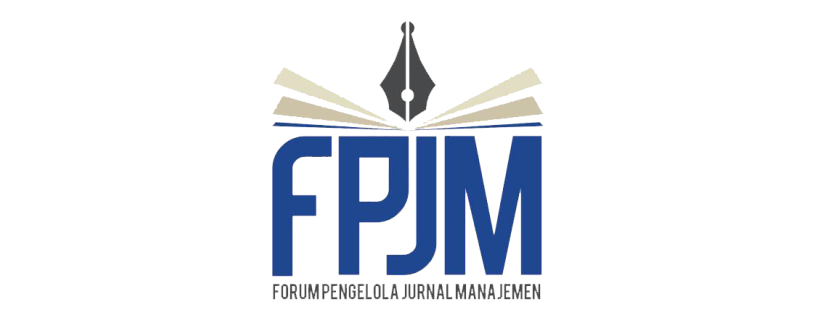Cognitive Absorption: Its Effect on Online Shopping App User Interest
DOI:
https://doi.org/10.26905/jmdk.v10i1.6674Keywords:
Continuance Intention, Cognitive Absorption, Perceived Usefulness, SatisfactionAbstract
The purpose of this study is to analyze the role of cognitive absorption in affecting a user's desire to use online shopping application on a regular basis. The methodologies used in this investigation are quantitative method. Primary data were collected through delivering questionnaires to individuals who met the criteria. Users of e-commerce application like Tokopedia, Shopee, Bukalapak, Lazada, Blibli, and others make up the study's demographic. A total of 253 respondents was randomly sampled using the accidental sampling method. Structural Equation Model (SEM) analysis is used in this study. The findings of this study indicate that cognitive absorption did not affect continuance intention directly, but the indirect effect construct a significant relationship. The indirect effect is derived from the mediation of the variables of perceived usefulness and satisfaction.
Downloads
References
Agarwal, R., Sambamurthy, V., & Stair, R. M. (1997). Cognitive absorption and the adoption of new information technologies. Academy of Management Proceedings, https://doi.org/10.5465/ambpp.1997.4983719
Agarwal, R., & Karahanna, E. (2000). Time flies when you’re having fun: Cognitive absorption and beliefs about information technology usage. MIS Quarterly: Management Information Systems, 24(4), 665-694. https://doi.org/10.2307/3250951
Balakrishnan, J., & Dwivedi, Y. K. (2021). Role of cognitive absorption in building user trust and experience. Psychology and Marketing, 38(4).643-668 https://doi.org/10.1002/mar.21462
Bhattacherjee, A. (2001). Understanding information systems continuance: An expectation-confirmation model. MIS Quarterly: Management Information Systems, 25(3),251-370. https://doi.org/10.2307/3250921
Daneji, A. A., Ayub, A. F. M., & Khambari, M. N. M. (2019). The effects of perceived usefulness, confirmation and satisfaction on continuance intention in using massive open online course (MOOC). Knowledge Management and E-Learning, 11(2), 201–214. https://doi.org/10.34105/j.kmel.2019.11.010
Davis, F. D., Bagozzi, R. P., & Warshaw, P. R. (1992). Extrinsic and Intrinsic Motivation to Use Computers in the Workplace. Journal of Applied Social Psychology, 22(14). 1111-1132, https://doi.org/10.1111/j.1559-1816.1992.tb00945.x
Davis, F. D. (1989). Perceived usefulness, perceived ease of use, and user acceptance of information technology. MIS Quarterly: Management Information Systems, 13(3), 319-339 https://doi.org/10.2307/249008
Duy Phuong, N. N., Luan, L. T., van Dong, V., & le Nhat Khanh, N. (2020). Examining customers’ continuance intentions towards e-wallet usage: The emergence of mobile payment acceptance in Vietnam. Journal of Asian Finance, Economics and Business, 7(9), 505-516 https://doi.org/10.13106/JAFEB.2020.VOL7.NO9.505
Hair, J. F., Sarstedt, M., Hopkins, L., & Kuppelwieser, V. G. (2014). Partial least squares structural equation modeling (PLS-SEM): An emerging tool in business research. In European Business Review 26, (2), 106-121 https://doi.org/10.1108/EBR-10-2013-0128
Halilovic, S., & Cicic, M. (2013). Antecedents of information systems user behaviour-extended expectation-confirmation model. Behaviour and Information Technology, 32(4), 359-370 https://doi.org/10.1080/0144929X.2011.554575
Hausman, A. v., & Siekpe, J. S. (2009). The effect of web interface features on consumer online purchase intentions. Journal of Business Research, 62(1, 5-13. https://doi.org/10.1016/j.jbusres.2008.01.018
Hoffman, D. L., & Novak, T. P. (2009). Flow Online: Lessons Learned and Future Prospects. Journal of Interactive Marketing, 23(1), 23-34 https://doi.org/10.1016/j.intmar.2008.10.003
Jahanmir, S. F., Silva, G. M., Gomes, P. J., & Gonçalves, H. M. (2020). Determinants of users’ continuance intention toward digital innovations: Are late adopters different? Journal of Business Research, 115(C), 225-233 https://doi.org/10.1016/j.jbusres.2019.11.010
Jumaan, I. A., Hashim, N. H., & Al-Ghazali, B. M. (2020). The role of cognitive absorption in predicting mobile internet users’ continuance intention: An extension of the expectation-confirmation model. Technology in Society, 63 (C) https://doi.org/10.1016/j.techsoc.2020.101355
Kim, M. (2022). How can I Be as attractive as a Fitness YouTuber in the era of COVID-19? The impact of digital attributes on flow experience, satisfaction, and behavioral intention. Journal of Retailing and Consumer Services, 64. https://doi.org/10.1016/j.jretconser.2021.102778
Koufaris, M. (2002). Applying the Technology Acceptance Model and flow theory to online Consumer Behavior. Information Systems Research, 13(2), 205-223 https://doi.org/10.1287/isre.13.2.205.83
Leong, P. (2011). Role of social presence and cognitive absorption in online learning environments. Distance Education, 32(1),5-28 https://doi.org/10.1080/01587919.2011.565495
Lin, H. F. (2009). Examination of cognitive absorption influencing the intention to use a virtual community. Behaviour and Information Technology, 28(5), 421-431 https://doi.org/10.1080/01449290701662169
Marmer, M., Herrmann, B. L., Dogrultan, E., Berman, R., Eesley, C. E., & Blank, S. (2011). Startup Genome Report Extra on Premature Scaling. Genome, 2(March).
Mpinganjira, M. (2019). Cognitive absorption and behavioural intentions in virtual health communities: A focus on content posters. Journal of Systems and Information Technology, 21(1), 122-145 https://doi.org/10.1108/JSIT-06-2017-0044
Saadé, R., & Bahli, B. (2005). The impact of cognitive absorption on perceived usefulness and perceived ease of use in on-line learning: An extension of the technology acceptance model. Information and Management, 42(2), 312-327 https://doi.org/10.1016/j.im.2003.12.013
Schiffman, Leon. G., & Wisenblit, J. (2019). Consumer Behavior 12th Edition, UK: Pearson
Sekaran, U., & Bougie. (2017). Metode Penelitian untuk Bisnis Pendekatan Pengembangan-Keahlian, Jakarta: Salemba Empat
Song, J. H., & Zinkhan, G. M. (2003). Features of Web Site Design, Perceptions of Web Site Quality, and Patronage Behavior. ACME Proceedings.
Tseng, A. (2017). Why do online tourists need sellers’ ratings? Exploration of the factors affecting regretful tourist e-satisfaction. Tourism Management, 59,413-424 https://doi.org/10.1016/j.tourman.2016.08.017
Venkatesh, V., Morris, M. G., Davis, G. B., & Davis, F. D. (2003). User acceptance of information technology: Toward a unified view. MIS Quarterly: Management Information Systems, 27(3), 425-478 https://doi.org/10.2307/30036540
Visinescu, L. L., Sidorova, A., Jones, M. C., & Prybutok, V. R. (2015). The influence of website dimensionality on customer experiences, perceptions and behavioral intentions: An exploration of 2D vs. 3D web design. Information and Management, 52(1). https://doi.org/10.1016/j.im.2014.10.005
Wu, B., & Chen, X. (2017). Continuance intention to use MOOCs: Integrating the technology acceptance model (TAM) and task technology fit (TTF) model. Computers in Human Behavior, 67. 221-232https://doi.org/10.1016/j.chb.2016.10.028
Zhang, H., Lu, Y., Gupta, S., & Gao, P. (2015). Understanding group-buying websites continuance: An extension of expectation confirmation model. Internet Research, 25(5), 767-793. https://doi.org/10.1108/IntR-05-2014-0127
Zhou, T. (2014). Understanding continuance usage intention of mobile internet sites. Universal Access in the Information Society, 13(3), 329–337. https://doi.org/10.1007/s10209-013-0313-4
Downloads
Published
Issue
Section
License
Authors who publish with this journal agree to the following terms:
(1)Â Copyright of the published articles will be transferred to the journal as the publisher of the manuscripts. Therefore, the author confirms that the copyright has been managed by the journal.
(2) Publisher of Jurnal Penelitian is University of Merdeka Malang.
(3) The copyright follows Creative Commons Attribution–ShareAlike License (CC BY SA): This license allows to Share — copy and redistribute the material in any medium or format, Adapt — remix, transform, and build upon the material, for any purpose, even commercially.












